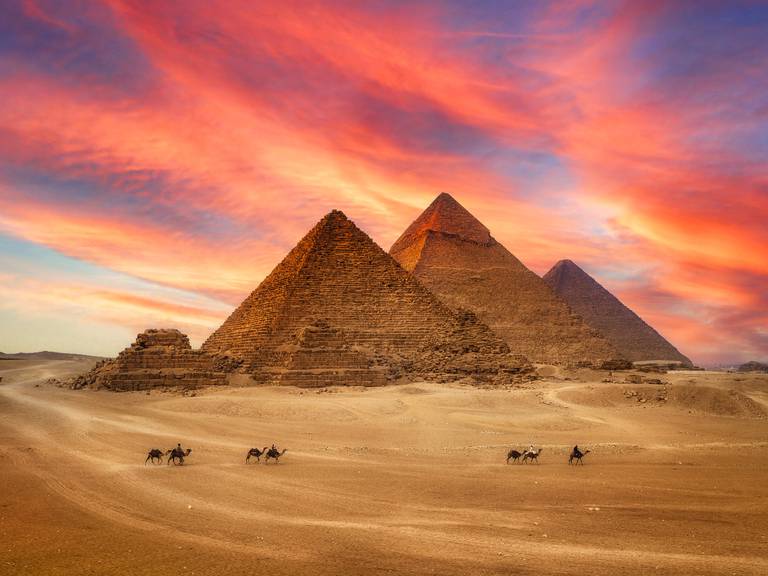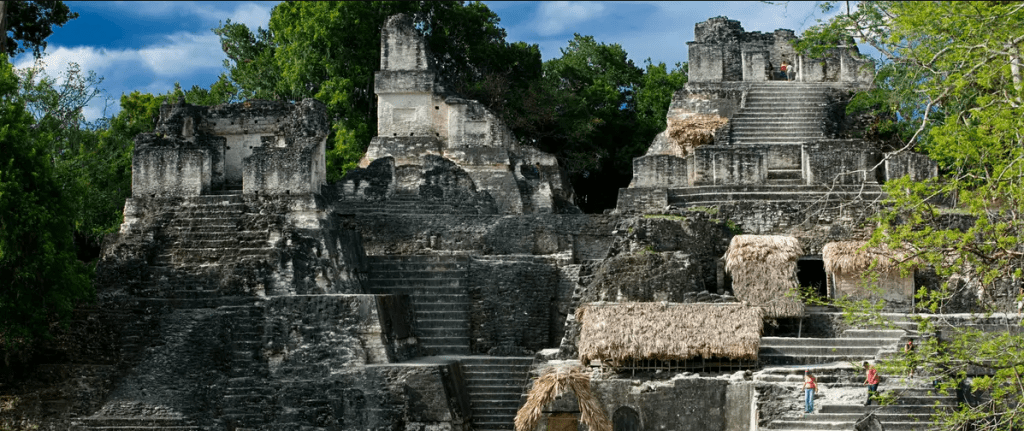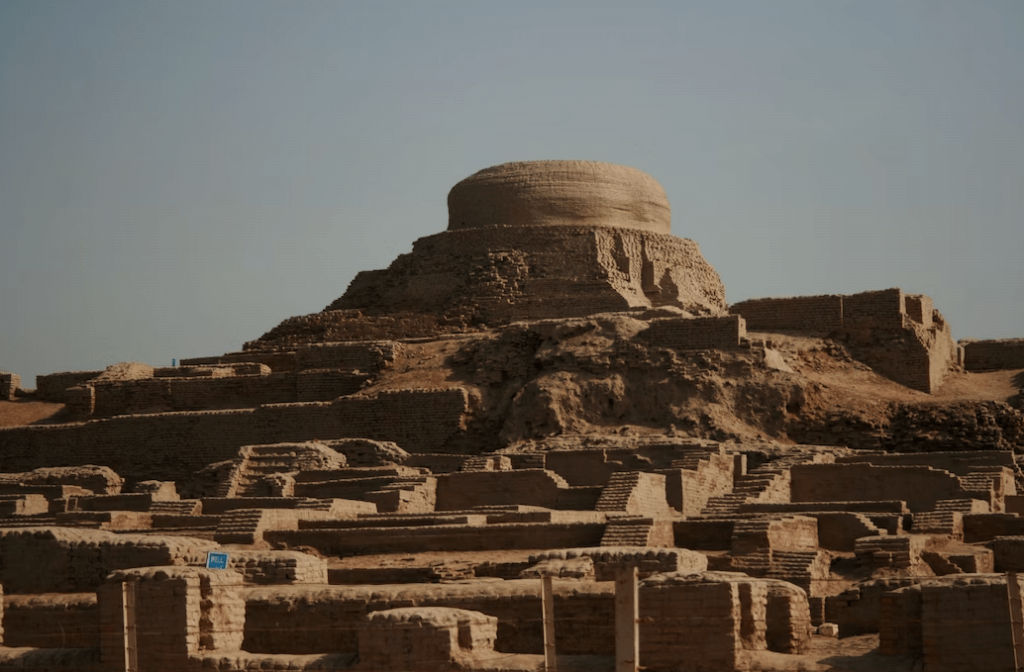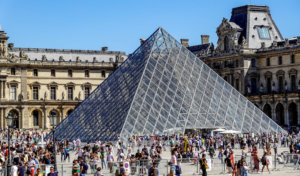The city of Paris is known for many iconic symbols: the Eiffel Tower, the Arc de Triomphe, Notre Dame Cathedral, and the list goes on. However, among all of these monuments, one of the most controversial and yet impressive is the glass pyramid of the Louvre Museum.
This structure, although modern compared to the old museum that houses it, has become synonymous with innovation, controversy and beauty. But, where does the fascination with crystal pyramids come from? How did we get from ancient Egypt and its monumental pyramids to glass structures that adorn our urban spaces and now, with the Piro Dome, even our homes?
The Louvre Pyramid: A Blend of Ancient and Modern
When French President François Mitterrand commissioned the French architect Ieoh Ming Pei design a new entrance for the Louvre, few could have imagined the uproar it would cause. Inaugurated in 1989, the Louvre's Crystal Pyramid is a marvel of contemporary architecture, but its addition to such a historically charged building was, at first, the source of much controversy.

The pyramid is a testament to how ancient architectural forms can be reinvented with modern materials and techniques. With more than 600 glass panels, the structure seems to defy the laws of gravity, creating a play of light and reflections that change with the seasons and the time of day. More than just an entrance hall, the pyramid has become a symbol of how the ancient and the modern can coexist in harmony.
However, to really understand our fascination with these structures, we must go back thousands of years, to a time when the pyramids were much more than just architectural structures.
The Pyramids: Monuments to Time and Heaven
The pyramids of ancient Egypt, especially those at Giza, are arguably the most iconic structures ever built by man. These monumental edifices were not mere tombs; they were representations of the cosmos, a stairway to heaven and a testament to the greatness of the pharaohs.

Built more than 4500 years agoInitially, the pyramids were a reflection of the power and wealth of the pharaohs. However, over time, their meaning deepened. They became representations of the cycle of life, death and resurrection, linked to the solar god Ra. The precise orientation of these pyramids to the cardinal points reflects a deep astronomical understanding and an intrinsic connection to the cosmos.
Throughout history, pyramids have been studied, admired and sometimes even feared. Their perfect shape and their resistance to the passage of time have led to speculation and theories, some of which border on the supernatural. But regardless of the beliefs and theories surrounding these structures, one thing is certain: the pyramids have captured the imagination of mankind as few other things have.
Pyramids in the World: Not Just an Egyptian Creation
Although the pyramids of Egypt are the most famous, they are not the only pyramids in the world.. In fact, pyramidal structures are found in different parts of the world, from Central America to Asia. These pyramids, although different in design and purpose, share the central idea of connecting the earth with the sky.
The step pyramids of Mesoamerica, such as those at Teotihuacán in Mexico or Tikal in Guatemalawere ceremonial and religious centers that played a fundamental role in pre-Columbian civilizations. These structures, although different in design from the Egyptian pyramids, also reflected a cosmology and worldview centered on the connection between the earth and the cosmos.

In Asia, pyramids such as those of the ancient Indus Valley civilization in places such as Mohenjo-Daro and Harappa suggest a pyramidal architectural tradition that also dates back thousands of years.
Although lesser known, these structures reflect an architectural and cultural tradition that saw the pyramid not only as a monument but as a representation of the cosmos.

The Cultural and Spiritual Significance of the Pyramids
Regardless of culture or geography, pyramids have been viewed throughout history not only as architectural structures, but also as spiritual portals. In ancient Egypt, the pyramids were seen as the stairway by which the pharaoh ascended to heaven.. In Mesoamerica, they were places of sacrifice and communion with the gods.
Beyond their religious or funerary function, the pyramids were also symbols of human aspiration, monuments pointing heavenward, reflecting the human desire to connect with something greater than oneself. This celestial connection has been interpreted in different ways in different cultures, but the underlying theme remains the same: a desire for transcendence, for connection with the divine.
The Influence of Feng Shui and the Energetic Properties of Crystal
With the passage of time and the evolution of spiritual beliefs, pyramids have been subject to revision and reinterpretation. In modern culture, especially with the resurgence of interest in feng shui and other esoteric practices, pyramids have been seen as concentrators and amplifiers of energy.
The feng shuiAn ancient Chinese practice that deals with the flow of energy or "chi" in a space, often uses crystals and pyramid shapes to enhance and balance the energy in an environment. It is believed that pyramids, due to their unique shape, have the ability to concentrate cosmic energy, while crystal, with its clarity and ability to refract light, can act as an amplifier of this energy.
In this context, a glass pyramid becomes not only an architectural structure but also a spiritual tool, a means to enhance well-being and harmony in a space.
The Pyro Dome and the Modern Pyramid Resonance
With the creation of the Pyro DomeThis millennia-old fascination with the pyramids finds a new manifestation. This glass structure is not only a testament to modern engineering and design, but also an echo of the deep spiritual and cultural connection humanity has felt with the pyramids throughout history.
The Piro Domo, with its unique design and amplifying properties, is not only a living space but also a sanctuary, a place where the ancient and the modern meet.
It is an invitation to reconnect with the traditions of the past while living in the present, and a manifestation of how history, architecture and spirituality can merge into a unique experience.
As the crystal pyramids continue to capture our imagination, the Piro Domo is presented as the next chapter in this rich historical tapestry.The new building is both a home and a gateway to the unknown, combining tradition and innovation in a space that is both a home and a portal to the unknown.

With more than 15 years in the construction world, I am specialized in materials, works and innovative structures such as domes and glass pyramids. In domodomos.com, I share my passion for building dreams and my experience acquired in the family business.










